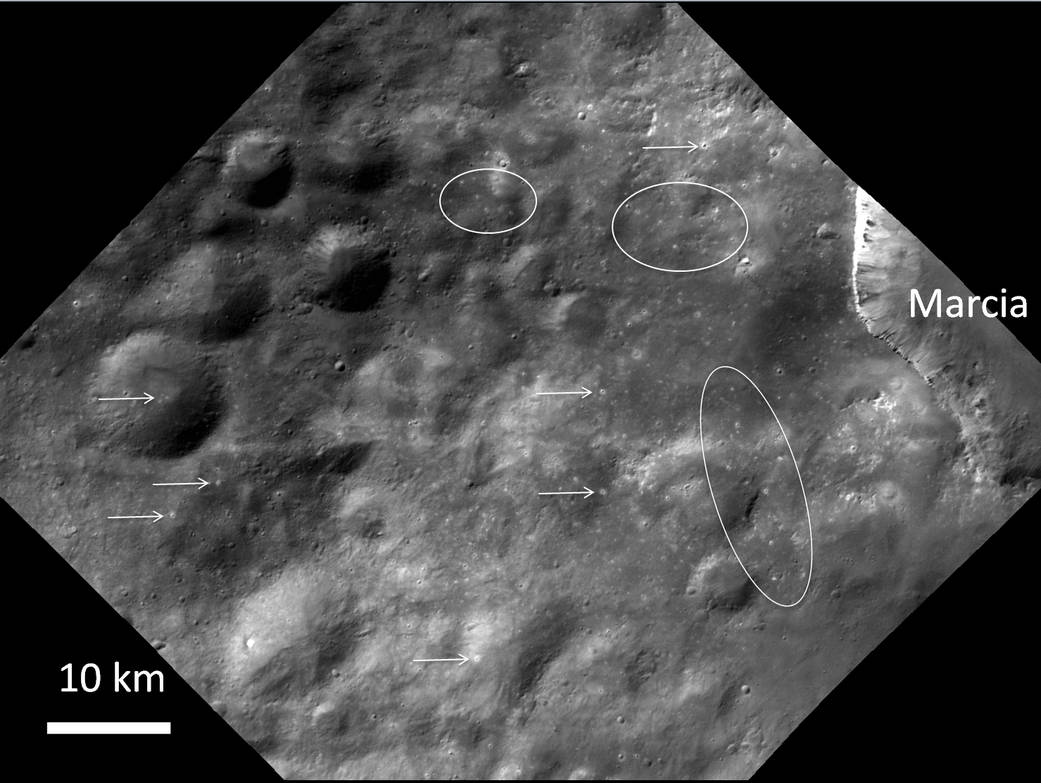
Numerous small, bright spots appear on Vesta, as seen in this image from NASA’s Dawn spacecraft. This region is just north of the equator, to the west of Marcia crater in the Marcia quadrangle. The small spots are approximately several hundred yards (meters) in size.
This image was taken during Dawn’s high-altitude mapping orbit (on average 420 miles or 680 kilometers above the surface). When Dawn looked more closely at these spots at lower altitude, scientists could see most of them were small craters with bright rims or craters with bright material on their walls.
This particular image was taken on Oct. 28, 2011 at an altitude of about 435 miles (700 kilometers). The image covers an area about 1,800 square miles (4,500 square kilometers).
The annotated version of this image highlights the location of some bright spots with white arrows and ovals.
The Dawn mission to the asteroids Vesta and Ceres is managed by NASA’s Jet Propulsion Laboratory, a division of the California Institute of Technology in Pasadena, for NASA’s Science Mission Directorate, Washington. Dawn is a project of the directorate’s Discovery Program, managed by NASA’s Marshall Space Flight Center in Huntsville, Ala. UCLA is responsible for overall Dawn mission science. The Dawn Framing Cameras have been developed and built under the leadership of the Max Planck Institute for Solar System Research, Katlenburg-Lindau, Germany, with significant contributions by DLR German Aerospace Center, Institute of Planetary Research, Berlin, and in coordination with the Institute of Computer and Communication Network Engineering, Braunschweig. The framing camera project is funded by the Max Planck Society, DLR, and NASA/JPL.
More information about the Dawn mission is online at: https://www.nasa.gov/dawn and http://dawn.jpl.nasa.gov .
Credit: NASA/JPL-Caltech/UCLA/MPS/DLR/IDA/UMD› Unannotated version
























